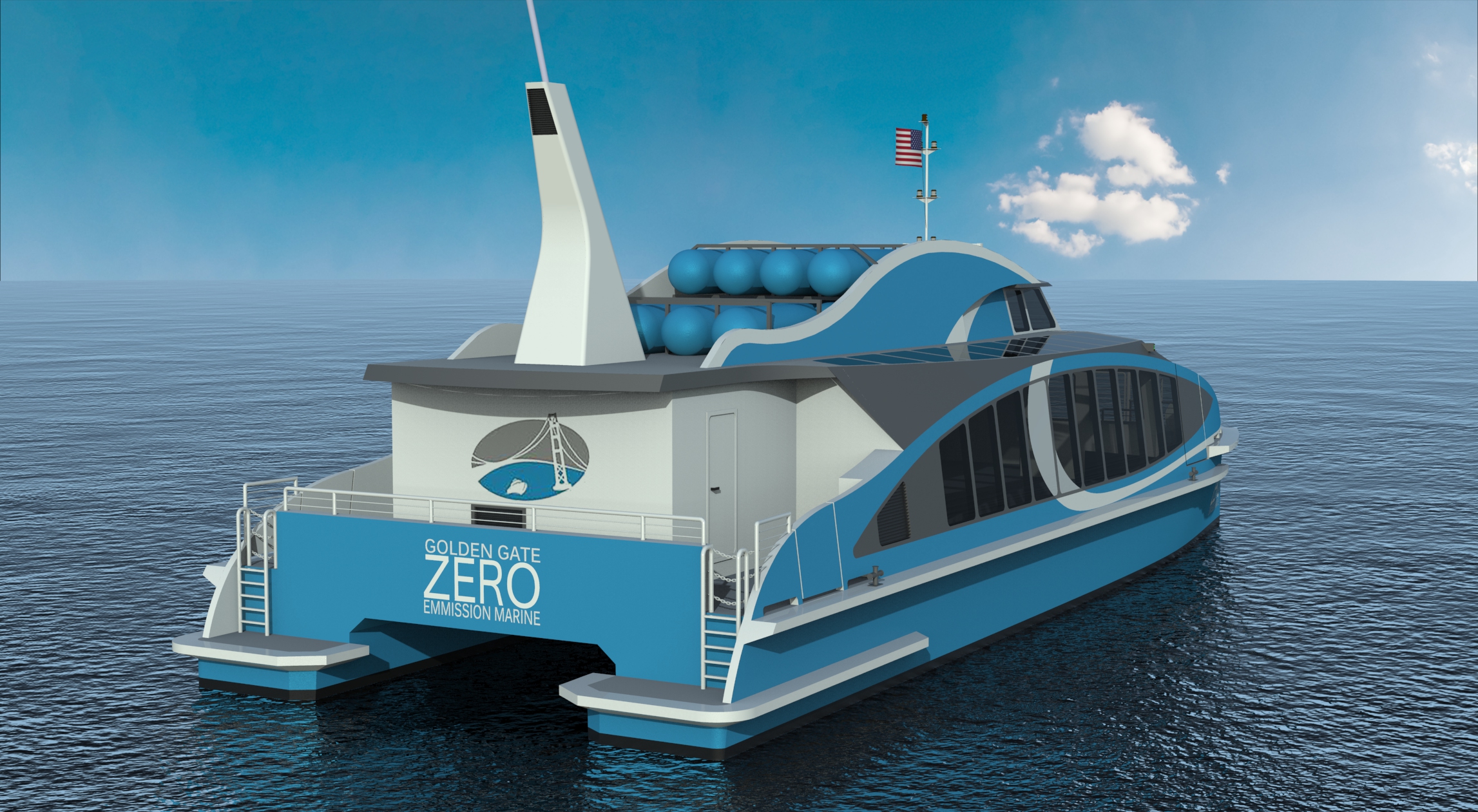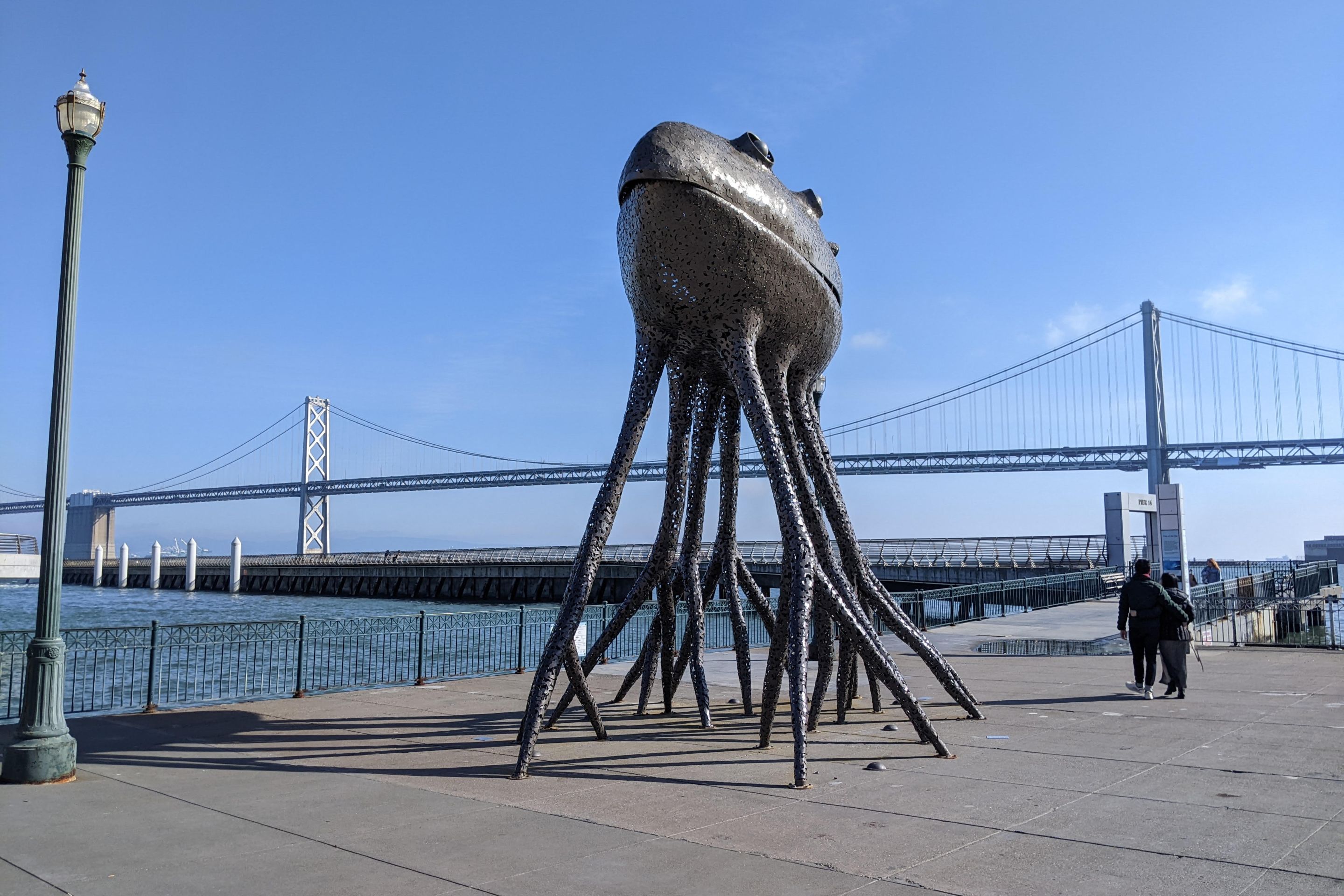Note: Metropolitan Shuttle, a leader in bus shuttle rentals, regularly sponsors coverage on Streetsblog San Francisco and Streetsblog Los Angeles. Unless noted in the story, Metropolitan Shuttle is not consulted for the content or editorial direction of the sponsored content.
An Alameda-based company, Golden Gate Zero Emission Marine, will receive a $3 million grant from the California Air Resources Board (CARB) to build a prototype hydrogen-powered, fuel-cell ferry.
As Zero Emission Marine's web page puts it: "Hydrogen is the simplest element consisting of only one proton and one electron. It is the most plentiful element in the universe and extremely high in energy."
The kind of hybrid, battery powered/hydrogen-powered fuel cell electric technology the company is talking about has great promise to reduce overall emissions and should certainly reduce local emissions of dangerous particulates and noxious gases. And Streetsblog, of course, supports an expansion of ferry services--regardless of motive power--to get more people out of the most inefficient and dangerous urban transport mode: automobiles.
But it's important not to lose track of what hydrogen is and what it isn't.
Pure hydrogen doesn't exist naturally on earth (except in trace quantities). It's bound to other molecules, such as in H2O. It's also found in hydrocarbons, such as gasoline, natural gas, etc. So it can't just be extracted from the ground. It has to be manufactured.
That takes energy. Hydrogen can be made in two ways.
The first is electrolysis, which consists of using electricity to split water into hydrogen and oxygen. Recombine them in a fuel cell later and you get most of the electricity back, to run a ferry, or a car, or whatever you wish. Hydrogen is a way to store electricity, like a battery, more than it is a fuel. But it's also only as clean as the plant that generated the electricity in the first place.
The far more common way of producing hydrogen is to use steam to extract it from hydrocarbons such as methane (The Department of Energy has a good web page that explains this process). The byproducts from that, unfortunately, are carbon monoxide and carbon dioxide. It also requires energy to heat the steam.
How much energy is consumed to compress hydrogen to between 5,000 and 10,000 pounds per square inch? How much energy is consumed shipping it and storing it safely? The startup's web page says hydrogen is "extremely high in energy." But the energy density of diesel fuel, which the ferries currently use, is about four times that of compressed hydrogen. Depending on how it is produced, overall emissions can be higher to extract hydrogen than just burning the fuels in the car or ferry directly.
In either case, as Streetsblog USA laid out in a post about hydrogen-powered, 'environmentally friendly' Hummers, the takeaway is that it takes more energy to manufacture hydrogen than the hydrogen itself produces.
"Most hydrogen is made from natural gas, [and] though hydrogen made by electrolysis using renewable energy sources such as wind, solar, and hydro is on the rise, it is still more expensive," wrote Joseph Pratt, CEO of Zero Emission Marine, in an email to Streetsblog. "Since we are working on a fixed budget from CARB, we will choose whichever source of hydrogen will fit within our budget."
But as Pratt also pointed out to Streetsblog, powering a ferry from hydrogen means they can switch to fully renewable hydrogen as soon as it becomes economical. So the question for policymakers is not so much whether an emissions-free, hydrogen-powered ferry can be built–it’s about how to make sure the hydrogen it uses really comes from clean sources.






